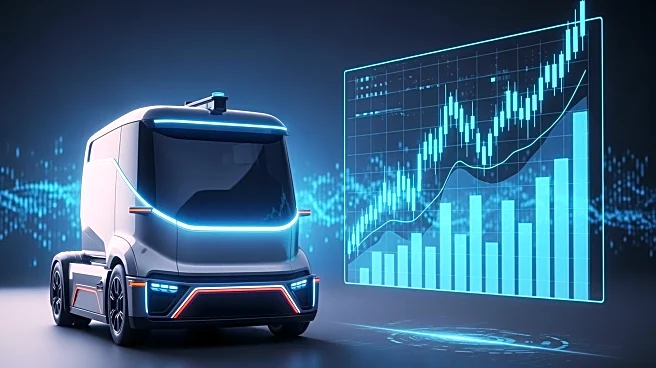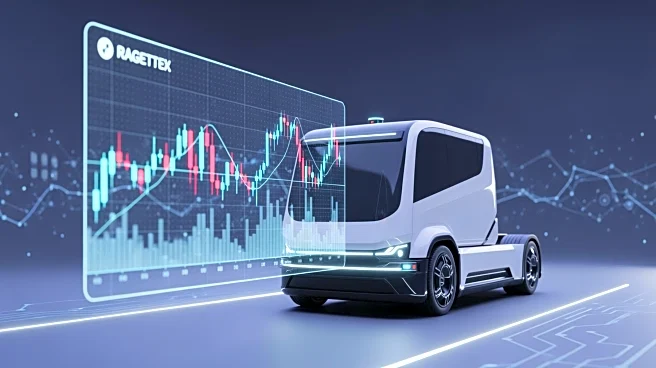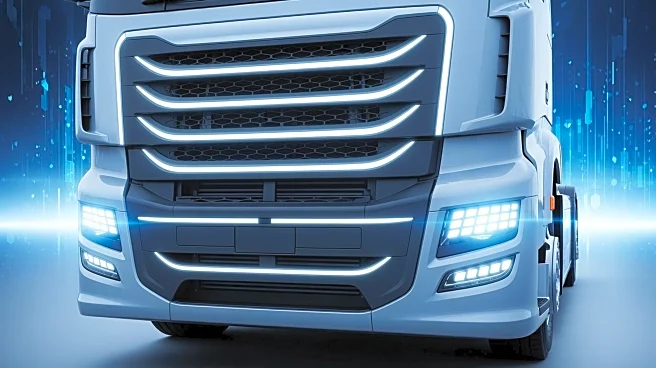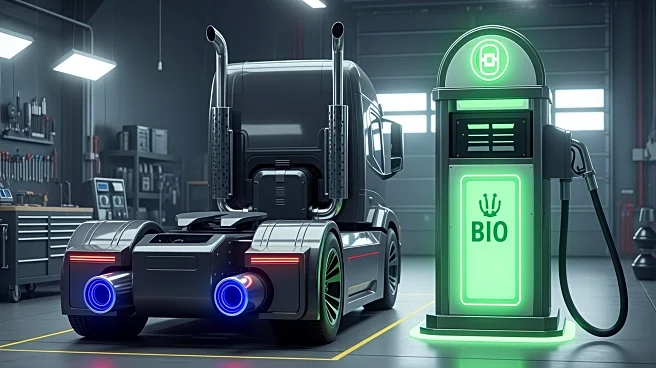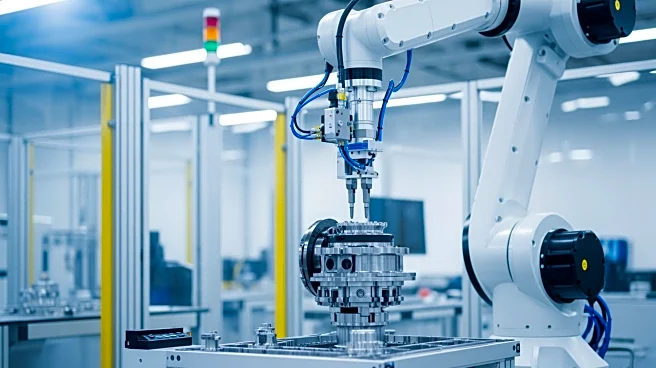What's Happening?
Daimler Truck North America (DTNA) has introduced the latest iteration of its Freightliner Cascadia, a flagship over-the-road tractor, with significant upgrades in technology and efficiency. The new model
features advanced fleet business tools, safety technology, and improved aerodynamics. It includes DTNA's Detroit Connect telematics platform and a range of advanced driver assistance systems (ADAS). The Cascadia's aerodynamic enhancements contribute to a 1.9% increase in fuel efficiency compared to previous models. Engine options include the Detroit DD13 and DD15, as well as the Cummins X15N, a natural gas engine for heavy-duty applications.
Why It's Important?
The introduction of the 2026 Freightliner Cascadia reflects DTNA's commitment to innovation and sustainability in the trucking industry. The enhanced fuel efficiency and advanced technology offerings are crucial for fleet operators seeking to reduce operational costs and improve safety. As environmental regulations become more stringent, the availability of a natural gas engine option positions DTNA as a leader in providing sustainable solutions for heavy-duty transportation. This development is likely to influence industry standards and encourage other manufacturers to adopt similar technologies.
What's Next?
DTNA will continue to focus on expanding its lineup of efficient and technologically advanced vehicles. The success of the new Cascadia model could lead to further innovations in engine technology and vehicle design, as DTNA aims to meet the evolving needs of fleet operators. The company's emphasis on sustainability and efficiency may also drive partnerships and collaborations within the industry to advance green transportation solutions.
Beyond the Headlines
The advancements in the Freightliner Cascadia could have long-term implications for the trucking industry, potentially accelerating the shift towards more sustainable and efficient transportation solutions. As fleet operators increasingly prioritize environmental impact and cost savings, the demand for vehicles with advanced technology and alternative fuel options is likely to grow.



